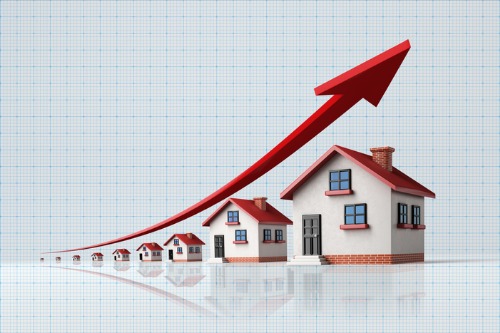

The slowdown in housing approvals is one of the biggest reasons why Sydney property prices are spiking, according to one of the leading experts in the field.
Tom Forrest, CEO of Urban Taskforce Australia, a peak body for property developers, has put the root cause of the spectacular rise in house prices in Sydney down to simple economics, rather than the oft-cited ‘perfect storm’ of low interest rates, pent-up pandemic demand and government intervention.
“Housing supply has been consistently not meeting demand in the Greater Sydney and across regional New South Wales,” he told Australian Broker. “Anyone since Adam Smith will tell you that if you have supply consistently not meeting demand then the price will go up. That’s what happened and we’re seeing it in abundance.”
“There’s no doubt that these planning issues that are causing undersupply are not the only reason. Low interest rates and the availability of money, APRA loosening controls and government have all had an impact on bumping up prices.”
“But they only do that if you have a shortage of supply. If you had abundant supply, and you also had these stimuli happening, that would mean savings in the pocket for new home buyers. Where you have a shortage of a supply and also a stimulus, that leads to price rises. That’s what is happening in all the capital cities but particularly in Sydney and regional NSW.”
Some have mooted that the reason for a lack of supply has been the lack of new properties entering the market due to construction slowdowns caused by the pandemic. According to Forrest, however, in New South Wales, that is simply untrue and, in fact, the underlying problems existed well before Covid struck.
“I don’t think this is going to work through the system,” he said. “There are several reasons for this. The NSW Productivity Commission did a detailed analysis of this, and what they showed is that there has been a consistent undersupply for roughly 15 years, and that cumulative undersupply has resulted in the average household occupancy rates being the highest of any capital in Australia."
“You had a pent up demand: to put it frankly, you had 27-year-olds living with their parents because they couldn’t afford to get out of their homes. They were trying to save for a deposit but couldn’t get out of the home because prices were so high.”
“The household occupancy rate is a manifestation of supply not meeting demand. The other manifestation is rising house prices. There’s two things, but they both point to the same problem.”
“During Covid in New South Wales, very early on construction was declared and essential services, so throughout 2020 and right up to June 2021, the Covid experience had very little impact on construction. In many circumstances, sites operated more efficiently because there was no traffic on the roads and you could get raw materials more quickly.”
“The only restriction was the number of people who could go up hoists for high rises, but on the other hand, the NSW government made it more flexible to work on weekends and public holidays, which allowed the working week to be stretched and overcome inefficiencies.”
“We haven’t had a lack of supply because of Covid: the lack of supply came from the lack of approvals, which bottomed in the second half of 2018 and throughout 2019 before the pandemic hit.”
“Approvals dropped off, and as night follows day, you know that if approvals fall then two to three years later, construction and completions will drop off. That’s exactly what has happened.”
“I think there’s a bit of hiding behind Covid from policymakers. The idea that there’s been a drop off in completions because of Covid is absolutely wrong.”
“If you read the numbers published by the Department of Public Planning and by the ABS, it was the approvals that dropped off because there was a 2019 election and the government didn’t want to be seen to be pushing high rise development too much.”
“They told the Department of Planning to drop off on approvals, but after the election – and I understand that politics happens – they didn’t ramp the system back up.”
“They bottomed out, then Covid hit and the NSW public service disappeared for six months while they sorted out their IT systems, and the fact that they had already gone to a nadir meant that we started the Covid experience from a bad position and we continued to bottom out.”
“Towards the end of 2020, coming into this year, we saw an uptick in approvals and some fast track programs, as well as Covid stimulus, and that has led to a rise, but then we saw the shutdown of construction in July.”
“The approvals process has dropped right off again, so as night follows day, in a few years there will be an undersupply of housing.”
“It’s not just me saying that: the NSW Government’s Housing Performance Monitor, which they publish, predicts there to be 150,000 new dwellings completed over the next 5 years, which I think is optimistic.”
“Their housing demand forecasts show the need for 40,000 homes in Greater Sydney per year, that’s 200,000 over five years. If they’re actually predicting an undersupply of 50,000 homes in five years, the maths make it quite clear that housing supply is a significant contributor to the price spike and that’s not going to go away.”
